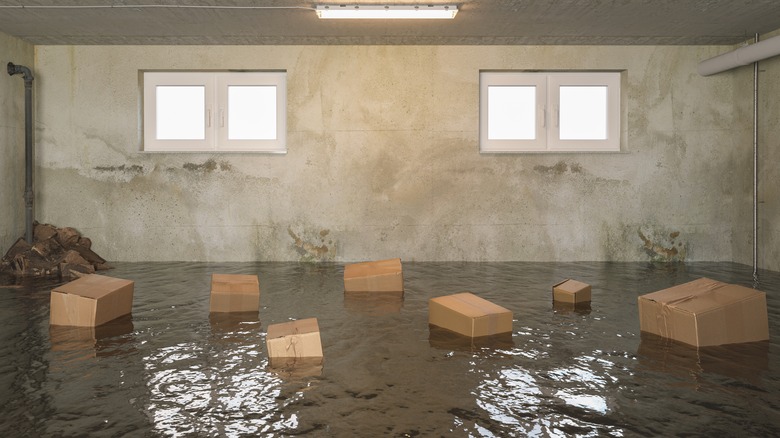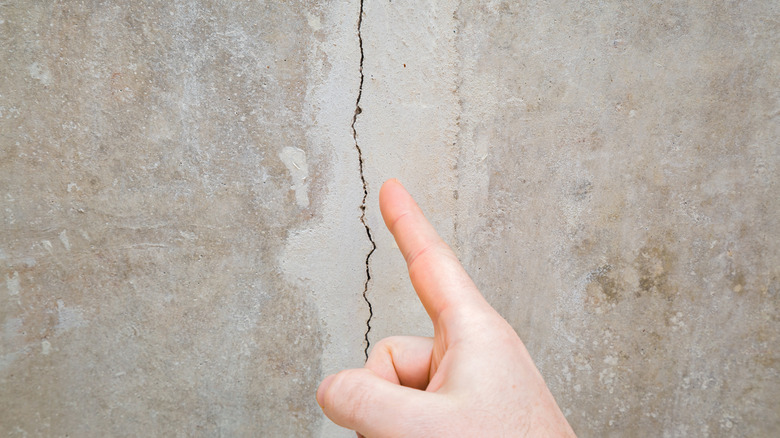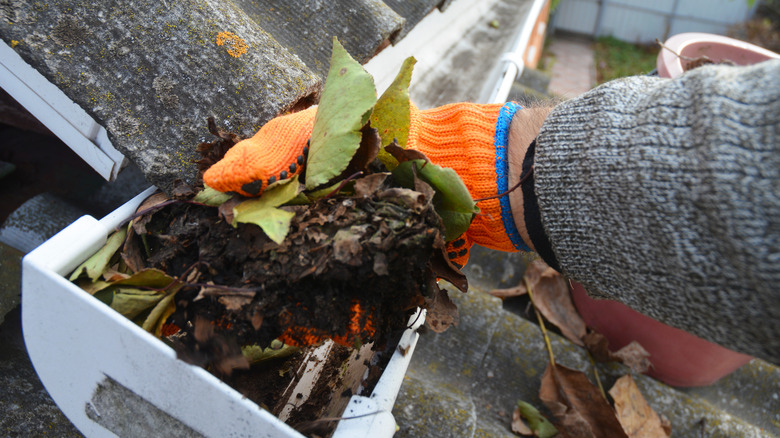Here's What You Need For DIY Basement Waterproofing
If you notice problems around your home's basement, like bowing walls in the foundation or a musty odor, it's time to consider waterproofing the space. Once leaking water leads to dampness inside your basement, you could end up with structural issues and cracks in the foundation that could affect the integrity of the house. If so, you need to waterproof your basement.
Suppose this is a job you want to tackle on your own; you'll need a number of tools and products to aid success. Some of the latter include waterproof silicone caulk, latex concrete caulk, a mold and mildew cleaning product, and waterproof concrete foundation paint. You also will need tools like a caulk gun, ladder, safety gloves, eye protection, a wire scrub brush, a putty knife, and painting supplies. Depending on the water issues you're having in the basement, you may need to invest in a sump pump and wall foundation supports, although these installations are best left to a professional.
Because the average cost to waterproof a basement when you hire a professional is between $3,000 and $7,000, this is a job homeowners may want to try. Of course, it is not a task for everyone. But if the problems are minor and you have a bit of know-how, you can DIY the basement waterproofing using the tools listed earlier to save yourself some money.
How to fix waterproofing issues inside your basement
Use a wire brush to remove dust and debris from inside the cracks in the foundation. Then, begin repairing the cracks by easily using a caulk gun and waterproof caulk. If you have a hairline crack, fill it with caulk and use a putty knife to smoothen the area tight against the wall. If the crack is less than ½ of an inch in width, use latex concrete caulk to fill in the gap and allow it to dry. If the dried-up caulk doesn't quite fill the gap, you can repeat the process.
Another way to waterproof your basement and prevent seepage through the concrete foundation is by applying waterproof paint to its surface. Moisture seeping through the foundation can lead to mold growth, crumbling concrete, and cracks. First, you'll want to brush the entire wall to remove any debris that could affect the adhesion of the paint. Then, use a mold cleanser to wash away any mold on the wall. From there, apply paint specifically made for creating a waterproof coating on the foundation walls. You might need two or more coats. Use a ¾-inch nap roller to ensure full coverage over the rough texture of the foundation walls.
Steps to take outdoors to help waterproof your basement
After waterproofing the interior of the basement's foundation walls, take additional steps to prevent water from placing pressure on its exterior. Most of the surface area of these walls is under the ground. Therefore, it's vital to reduce water exposure to the walls through the soil. One of the most common causes of water leakage and damage in a basement occurs when clogs in your roof gutters cause rainwater to spill over the top. This water then pools at the base of your home and increases the chance of moisture seeping through the foundation walls. Climb a ladder and clean out all your home's gutters. If you don't feel comfortable on a ladder, hire a pro to clean the gutters at least once a year. It costs an average of $159 to hire a gutter cleaning crew. Make sure the downspouts are attached, directing water away from the home.
Another key step is to adjust the grading around your home's foundation. Add or remove soil around the entire perimeter of your home to ensure the dirt is compact to the foundation and sloping, causing water to run outward. You should have a slope of 1 inch for every linear foot you extend outward from the foundation. Try to maintain the slope over a distance of at least 5 feet from the house.


